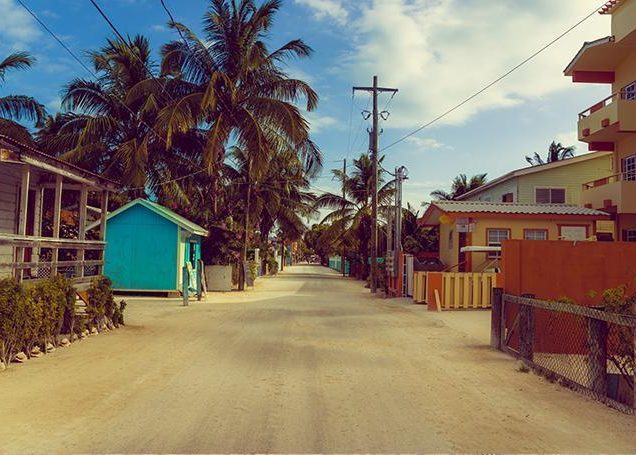

Belize adventure tours are emerging as one of Central America’s best kept secrets. Bordered by Guatemala, Mexico and the Caribbean Sea, this small country combines amazing broad sand beaches and offshore island paradises with lush rainforest, home to a myriad of bird and animal species. San Ignacio, the capital of the inland Cayo district, is our base for excursions like tubing on the beautiful Macal River, caving and visits to ruins and waterfalls. The vibrant Belize City features handsome colonial homes and many colourful characters.
Our Belize adventure tours take you just offshore to the small island of Caye Caulker which has the ultimate laid-back attitude, with ‘No Shirt, No Shoes…No Problem’ signs and a car-free lifestyle which means you’ll need sandals or a bicycle to meander your way around the sandy roads. Enjoy a walk along the docks with a balmy Caribbean Sea breeze, then snorkel over to the nearby barrier reef when you feel like taking a dip in the clear turquoise waters. There are plenty of ocean front restaurants to choose from when you need to get out of the sun. This is no doubt why a Belize adventure tour is always a highlight of Central America.
The Maya civilisation spread over Belize between 1500 BC and 300 AD and flourished until about 900AD. The first Europeans arrived in the area in the early 16th Century and settlement began with shipwrecked English seamen in 1638. This period also was marked by piracy, indiscriminate logging and sporadic conflict with native tribes and the neighbouring Spanish colonies. Belize grew into a more official colony of the UK during the late 18th and early 19th century under the name of British Honduras, and became a crown colony in 1862. Self-governing since 1964 and renamed Belize in 1973, George Price led the country to full independence in September 1981.
The highest point of Belize is 1160m. The majority of the country is tropical lowland. The country’s coastline is largely covered in mangrove swamp. Offshore the limestone extends eastward forming part of the second longest reef system in the world.
There is a basic rainy season May – November. Generally the hottest time will be the months of March – May, when it can get extremely hot and humid. Water visibility is best from March to September, but is still considered good most times of year (for divers).
The hurricane season on the Caribbean side of Central America runs from September to November. Usually this only means high winds and occasional storms (although sunny days do tend to prevail throughout the year). It is highly unlikely that the full force of a hurricane would hit any of the areas we pass through on our tours, however our tour leaders are fully prepared to take any necessary action and would make itinerary changes if required to ensure the safety of clients.
Visit www.worldclimate.com to get an idea of what the weather will be like on your tour.
Most nationals do not need a visa to enter Belize, however it is important to check with your nearest embassy or consulate. As a tourist you are usually entitled to 30 days, however depending on the immigration official you can be allocated less days.
On entering you may be asked to fill out an immigration card. A copy of this card should stay in your passport until you exit the country. There is no official fee to enter Belize, but to exit you must pay an official fee. Your tour leader will remind you of this on tour.
The local currency is the Belize Dollar. Usually ‘BZ$’ is used to denote the currency. Belize has a fixed exchange rate of 2:1 with the US dollar, and you may use either currency throughout the country, however you will usually get change in Belize dollars.
Remember that once out of Belize you will generally not be able to use or exchange Belize dollars. Therefore you must make sure you spend/exchange/ donate any left-over money before leaving the country.
For up-to-date exchange rates with your own currency visit www.oanda.com or www.xe.com.
ATMs are located in Belize City and San Ignacio. Visa, Plus, MasterCard and Cirrus/Maestro are accepted in some Belizean ATMs, as long as you have a four-digit pin. Visa cards are the most widely accepted and ATMs will only give you local currency (not US dollars). There are no ATMs on Caye Caulker and other machines can often be out of order.
You should also be able to get a cash advance at the bank (usually only possible for Visa and sometimes Mastercard) although some banks will require a copy of your passport.
Credit cards are accepted in most shops/restaurants/agencies. The most accepted credit card is Visa and sometimes Mastercard (American Express is not widely accepted), although authorisation can sometimes be denied due to poor computer connections or other problems! Note there may sometimes be commission charged when paying by credit card (up to 8% although 5% is standard).
Although bank cards are often the easiest way to go, there are times where they will not work for you even if your bank at home tells you it will. Do not rely on your card as your only source of money. Always have a few back-ups with you.
Belize generally accepts torn or marked US dollars, so if your notes are damaged you may want to off-load them here! You will have serious difficulties changing/using damaged notes in Honduras, Guatemala or Mexico.
Travellers cheques are very quick and easy to use and exchange in Belize as long as they are in US dollars.
Please note: you may find Belize expensive compared to the other countries we visit.
Bargaining is not common in Belize, as shops usually have set prices on goods.
Belize is not as well known for its handicrafts and textiles as its neighbouring counties are, but you can find some nice hand-made jewellery in Caye Caulker. In San Ignacio you can buy some interesting ‘rainforest remedies’ (health products), and throughout Belize you can buy world-renowned reggae and punta music CDs.
A 10% service charge is added on to the restaurant bill throughout most of Belize. If it is not added on, it is still expected (especially in the more expensive restaurants). There may also be ‘taxes’ added to your bill, on top of the service charge. Sometimes this is included in the menu price, other times it is added at the end. You are not expected to tip taxi drivers unless they go out of their way for you although you should tip anyone who helps with your luggage, approx 50-80cents. Tipping guides at the end of tours/excursions is always appreciated and your tour leader will advise you on this.
Taxis are recommended for getting around the San Ignacio area (as local buses can be non-existent or unreliable!). You should expect to pay roughly BZ$5 for each taxi you take locally, and up to BZ$10 for a longer journey. The taxis in Belize do not run on meters and you should always confirm the price before getting in the car.
Crime in Latin America is not as bad as its reputation as long as you are sensible and alert. Thieves do operate in parts of Belize but if you are cautious and sensible (NOT paranoid) and you should be fine. Try to keep away from dark quiet areas if on your own, particularly late at night and try to always take a taxi. If you have had a few drinks and are returning to your hotel at night – it is best to always take a taxi directly to the hotel. We suggest that whenever possible you leave all of your important documents in the hotel safe. However you should always carry some form of ID or a photocopy of your passport.
It is advisable not to wear expensive looking watches or jewellery and don’t carry a wallet in your back pocket or carry loose hanging bags. Keep your camera concealed when not in use. Remember that most thieves don’t use violence but rely mostly on diversionary tactics which can take place at anytime of the day or night. Do not be paranoid, but just be aware that it could happen at anytime. Always be vigilant and the chances are nothing will ever happen to you. The safety of our passengers is our tour leaders’ number one concern and they will provide all necessary local information during the pre-departure meeting.
There is some seafood available in Belize – particularly lobster and shrimp. Chicken and pork are also readily available as well as steak on the mainland. Most meals come with some kind of salad. Other common side dishes include coleslaw, potato salad, rice & beans and sweet fried bananas (platanos). You can get very good, cheap set meals for lunch, as this is the main meal of the day. Apart from the delicious local food, there are also many international restaurants to be found in Belize. Italian, Chinese, Indian and Sri Lankan restaurants are abundant.
Your tour leader will be able to recommend restaurants.
Lobster or Shrimp – grilled, fried, marinated, served with various sauces and spices – not to be missed. Note: Lobsters are only in season from mid-June to mid-February. The conch (shell fish) season begins when the lobster season ends. Shrimp are usually available year-round.
Local burritos – Belizean burritos are some of the best in the world. You can get vegetarian, chicken, shrimp or lobster fillings. There is a fantastic chilli sauce to be found on every Belizean restaurant table called ‘Marie Sharp’ – it comes in mild, hot, extra hot and BEWARE HOT!
If you are a strict vegetarian you may experience a distinct lack of variety in the food available, especially in small towns. Our tour leaders will do their best to provide interesting vegetarian alternatives for included meals, but your patience and understanding is requested.
Central American fruit is fresh and cheap. There are some fantastic selections of fruit smoothie and juices on offer. Papaya, melon, watermelon, mango, and pineapple are all very popular. Smoothies can be made with either water or milk. Always specify if you don’t want sugar. Latin Americans have a very sweet tooth and will usually automatically add the sugar.
Central America is known for its good beer. Belize beer is a little stronger in flavour than the other countries. Belikan Beer is the National beer. Ever since the pirates settled in Belize, rum has been the spirit of choice. White rum and coconut rum are most common. Belize is not known for its wine and it is best to order Chilean wine (although this may be expensive).
Bottled water is available on Caye Caulker, and water re-fills available at most stores.
The time difference in Belize is GMT/UTC -6. For other time differences please visit www.timeanddate.com
110 volts, US-style two pronged plugs
We are passionate adventure travelers who want to share the world and our travel experiences with everyone…
This website uses cookies so that we can provide you with the best user experience possible. Cookie information is stored in your browser and performs functions such as recognising you when you return to our website and helping our team to understand which sections of the website you find most interesting and useful.
Strictly Necessary Cookie should be enabled at all times so that we can save your preferences for cookie settings.
If you disable this cookie, we will not be able to save your preferences. This means that every time you visit this website you will need to enable or disable cookies again.
